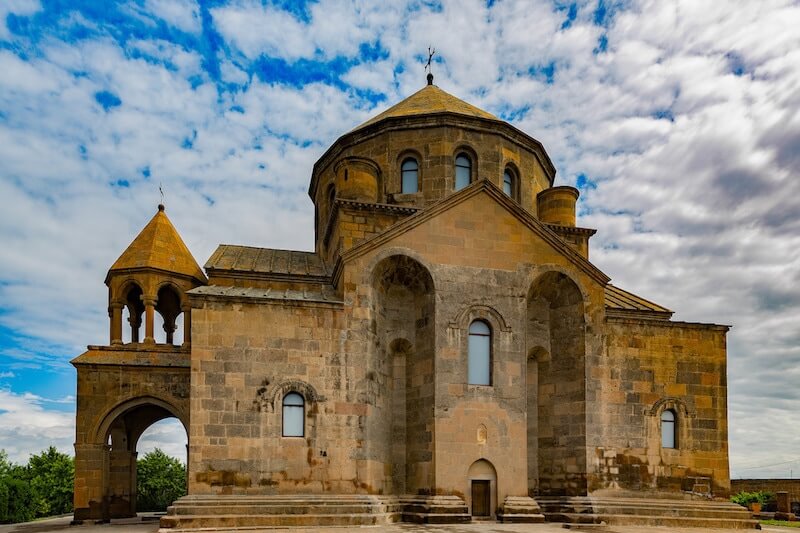St. Gayane church is one of the churches of the Holy Echmiadzin monastery complex. The building of the church stands on the site where Saint Gayane was martyred. Subsequently, it was here that she was buried. The Church was erected in the 7th century, has an unusual combined structure of a central domed and three-nave basilica.
The well-established transport infrastructure of Armenia allows to get to St. Gayane church by a private car or with the help of various travel companies which offer regular excursions and tours to different sights of the country. Due to the geographical location of St. Gayane church the trip will not seem long.
The high season in Armenia lasts for a long time due to the pleasant climate conditions. Warm days in Armenia start in March and last until late autumn; winter is usually snowless and not long. The high precipitation season is variable. The tourist season for St. Gayane church depends on the weather conditions.
According to the Armenian Apostolic Church, Gayane was the abbess of the monastery, which was located in the highlands of ancient Rome. The emperor Diocletian wanted to marry one of the nuns of the monastery, but all of them, refused to abandon their believes and staying faithful to their religion, decided to run to Armenia and settled near the capital Vagharshapat. The Armenian king Tiridates III, fascinated by the beauty of the same nun Hripsime, also wished to marry her. However, receiving the same answer, the king ordered to kill all the nuns. This time the nuns could not manage to escape: one by one virgins were killed. Three chapels were built in memory of these tragic events: on the grave of St. Hripsime, on the grave of St. Gayane, and the third one at the place where nuns lived and one of the them was killed.
St. Gayane church is one of the most significant architectural monuments in Armenia. St. Gayane Church was listed in the UNESCO World Heritage Sites along with historical churches of Vagharshapat in 2000.
Saint Gayane Church is a three-nave domed basilica with an octagonal drum resting on four internal pillars that divide the interior of the church into three naves. The middle sections of the side naves are elevated slightly over the corner ones and roofed with vaults across the building, forming a transversal nave. At the eastern wall of the church's interior is a semicircular apse with a rectangular chamber at either side. Three portals lead into the interior of the building. The main portal enters through the arched portico, while two side entries are located at the north and south walls.
ETCHMIADZIN MOTHER CATHEDRAL
1 km

ST. HRIPSIME CHURCH
2 km

ST. SHOGHAKAT CHURCH
2 km
